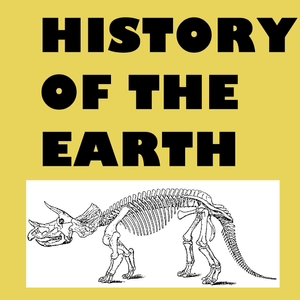
Today we’re going back about 280 million years, to what is now Uruguay in South America.
280 million years ago puts us in the early part of the Permian Period. Gondwana, the huge southern continent, was in the process of colliding with North America and Eurasia to form the supercontinent of Pangaea. South America, Africa, Antarctica, India, and Australia had all been attached to each other in Gondwana for several hundred million years, and the extensive glaciers that occupied parts of all those continents were probably still present in at least in highlands in southern South America and South Africa, as well as Antarctica.
But the area that is now in Uruguay was probably in cool, temperate latitudes, something like New Zealand or Seattle today. The connection between southern South America and South Africa was a lowland, partially covered by a shallow arm of the sea or perhaps a broad, brackish lagoon at the estuary of a major river system that was likely fed in part by glacial meltwater from adjacent mountains. We know the water was shallow because the rocks preserve ripple marks produced by wave action or currents.
The basin must have been near the shore because delicate fossils such as insect wings and plants are among the remnants. It looks like this shallow sea or lagoon became cut off from the ocean, allowing the waters to become both more salty, even hypersaline, and anoxic, as the separation restricted inflows of water, either fresh or marine, that could have continued to oxygenate the basin. In the absence of oxygen, excellent preservation of materials that fell to the basin floor began, and there were few or no scavenging animals to disrupt the bodies.
The rocks of the Mangrullo Formation, as it’s called today, include limestones and siltstones, but the most important for fossil preservation are probably the extremely fine-grained claystones and oil shales. These rocks contain some of the best preserved fossil mesosaurs known anywhere. That’s mesosaurs, not the perhaps more well-known mosasaurs, which are large whale-like marine reptiles that lived during Cretaceous time. Here, we’re in the Permian, well before the first dinosaurs.
Mesosaur by Nobu Tamura (Creative Commons license & source)
Mesosaurs were aquatic reptiles, and they are the earliest known. They evolved from land reptiles and were among the first to return to the water to adopt an aquatic or amphibious lifestyle. They were once thought to be part of a sister group to reptiles, a separate branch of amniotes, which are animals that lay their eggs on land or bear them inside the mother, like most mammals do. In that scheme, mesosaurs and reptiles would have diverged from a common, earlier ancestor. But more recent studies categorize them as reptiles that split off from the main genetic stem early in the history of the class, so they’re pretty distant cousins to dinosaurs and all modern reptiles, but they’re still reptiles. There is ongoing debate among evolutionary paleontologists as to exactly where mesosaurs fit. The fossils in Uruguay are so well preserved that we can identify the gut materials of mesosaurs, and we know they mostly ate crustaceans, aquatic invertebrates related to crabs, shrimp, and lobsters. The preservation is so exceptional that in some cases, soft body parts are preserved including major nerves and blood vessels in mesosaurs and stomachs and external appendages in the crustaceans. The earliest known amniote embryos also come from these fossil beds.
Mesosaurs had a short run in terms of their geologic history, only about 30 million years. They were extinct about 270 million years ago, well before the great extinction event at the end of the Permian, 250 million years ago. But the presence of coastal-dwelling mesosaurs in both South America and Africa was a contributing idea in the early development of the theory of continental drift, since it was presumed that they could not have crossed the Atlantic Ocean as it is today.
—Richard I. Gibson Links: Piñeiro et al. 2012 Environmental conditions Paleogeography from Ron Blakey
04/03/18 • -1 min
Generate a badge
Get a badge for your website that links back to this episode
Select type & size
<a href="https://goodpods.com/podcasts/history-of-the-earth-6092/episode-394-the-mangrullo-formation-of-uruguay-224892"> <img src="https://storage.googleapis.com/goodpods-images-bucket/badges/generic-badge-1.svg" alt="listen to episode 394 the mangrullo formation of uruguay on goodpods" style="width: 225px" /> </a>
Copy